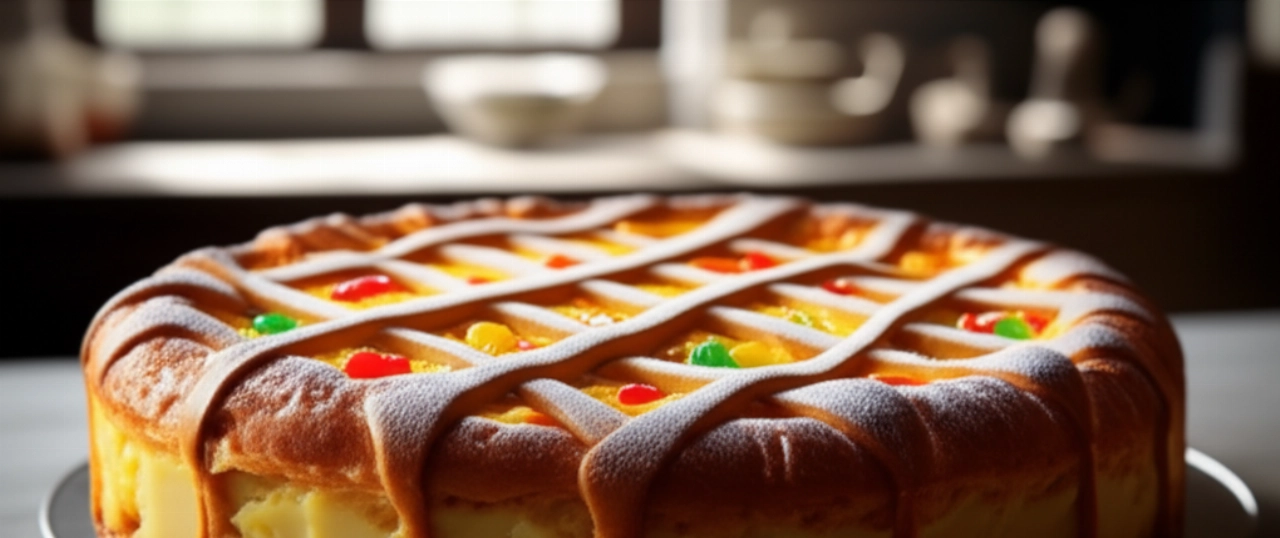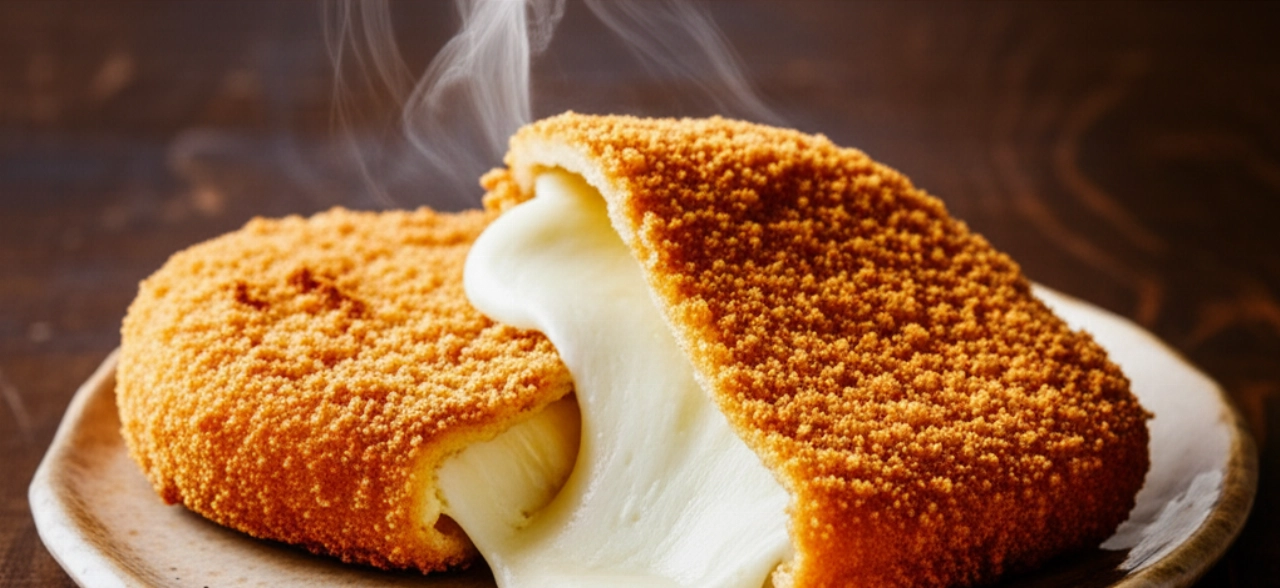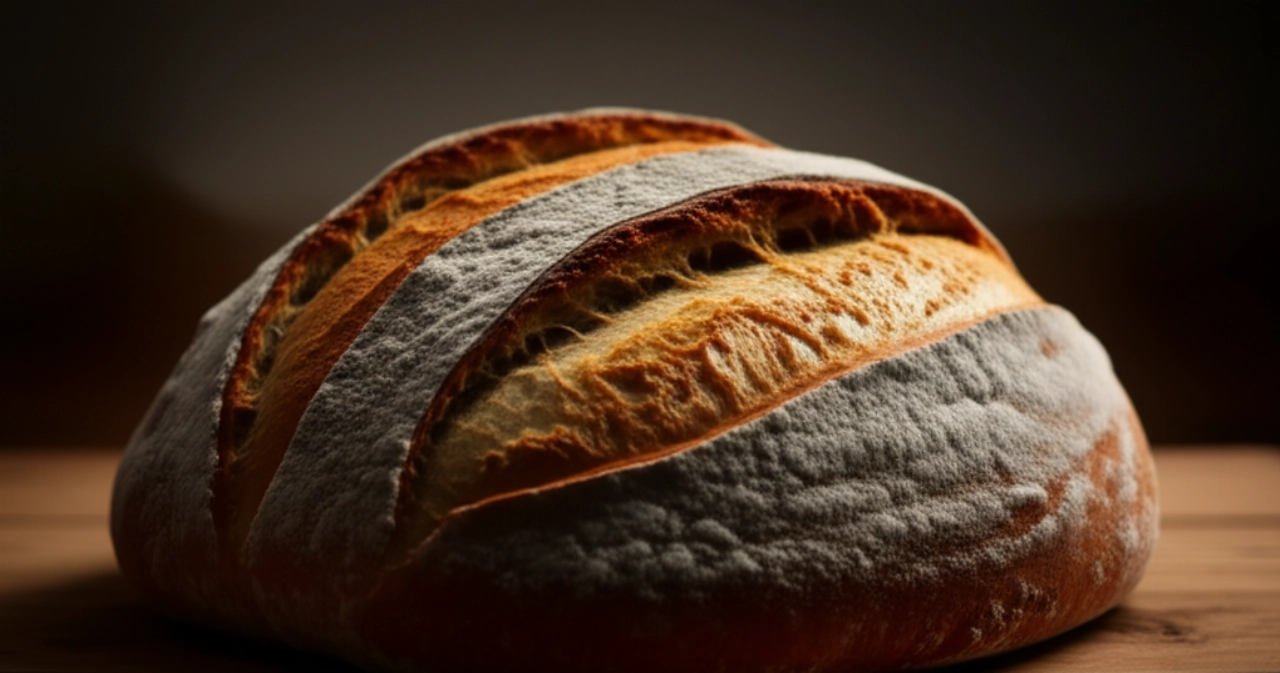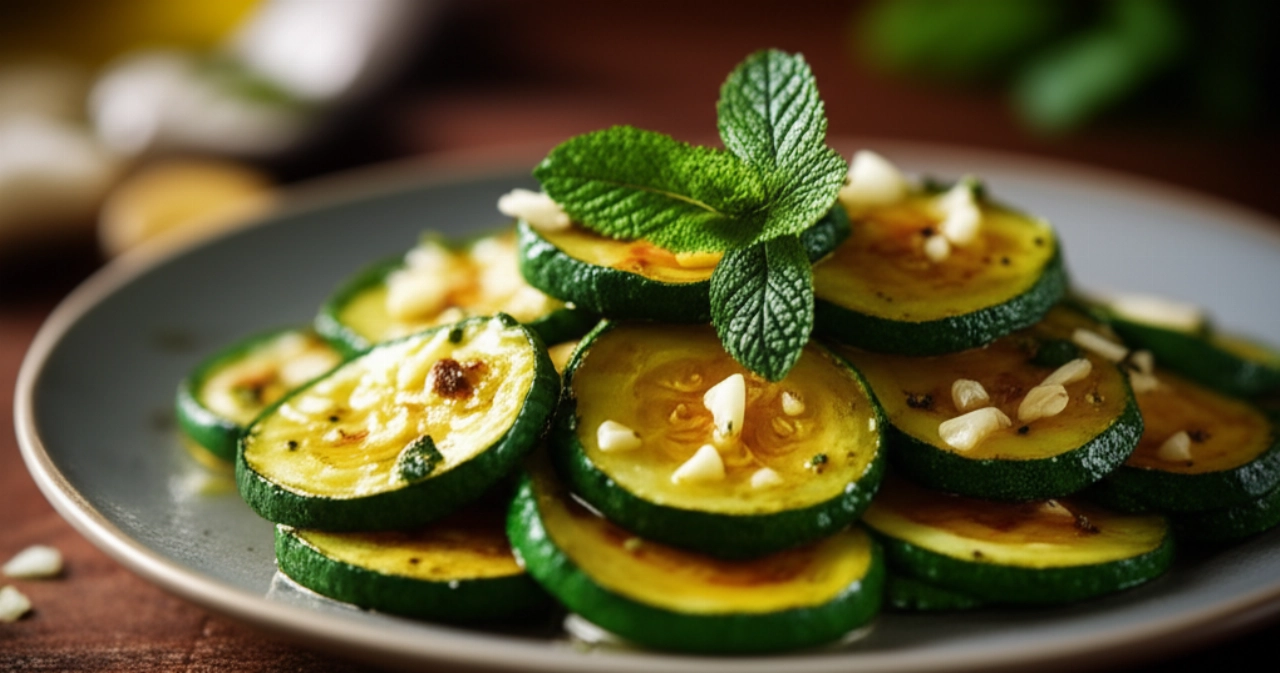There's a scent that speaks of Naples, of celebration, of pastry art handed down from generation to generation. A scent that envelops you and takes you straight to the heart of Campania's confectionery tradition: the unmistakable aroma of Neapolitan Sfogliatelle. Whether you're a lover of the surprising crispiness of riccia or the enveloping softness of frolla, the desire is always the same: to savor that masterpiece of taste, perhaps prepared with your own hands.
But let's face it, we often feel intimidated by sfogliatella, thinking it's an impossible feat, a secret jealously guarded by master pastry chefs. Too many complicated recipes, too many unclear steps, the fear of wasting precious ingredients, and, in the end, the frustration of a result that doesn't even remotely resemble what you dreamed of. "Is this really the original recipe?", you ask yourself. "Will I be able to make it properly for my guests?"
Make yourself comfortable. On this page, you won't just find a list of ingredients, but the definitive guide, full of tricks and tips, to prepare the best Neapolitan Sfogliatelle of your life. I will guide you step by step, revealing every secret, anticipating every doubt. Success is guaranteed, and your kitchen will be filled with the unmistakable scent of Naples. Here you will feel at home, and your sfogliatelle will be a triumph of flavor and authenticity.
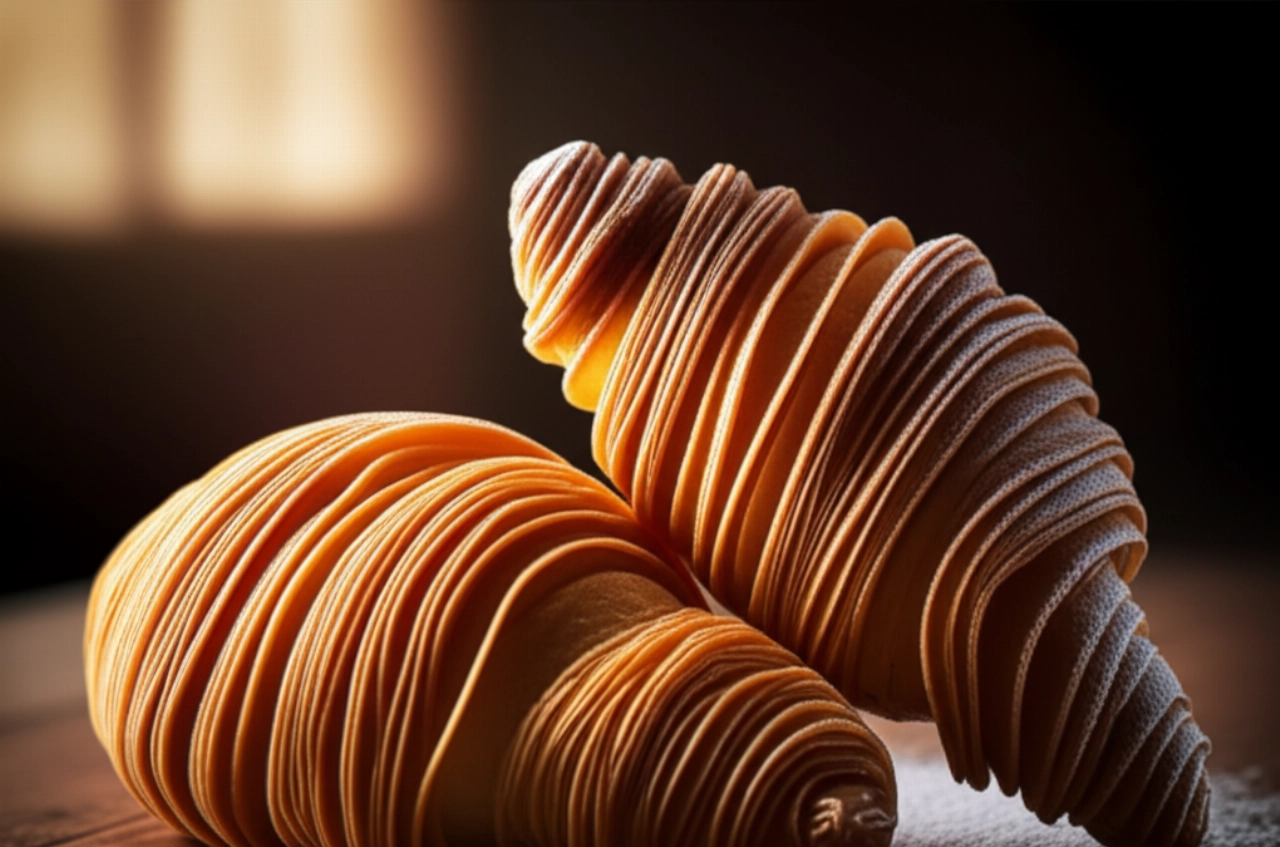
The Strategic Pillar: Your Double Neapolitan Perfection is Here!
How many times have you wanted to prepare Sfogliatelle, but stopped, thinking about their complexity, especially for the riccia version? Today I reveal a secret: it's not as difficult as it seems, if you have the right guide and the necessary patience. My promise is clear: I will guide you step by step to make both the Sfogliatella Riccia at home, with its impeccable and crispy puff pastry that opens into a thousand layers, and the Sfogliatella Frolla, soft, fragrant, and enveloping. Both with the creamy and fragrant traditional filling, the one that makes you close your eyes at the first bite. It will be like taking a trip to Naples, without leaving your kitchen. Get ready to receive applause and see your loved ones' eyes light up!

Smart Ingredients: The Choice That Makes a Difference
It's not just a list, but a reasoned selection. Every ingredient plays a fundamental role in the success of your sfogliatelle. Trust me, quality truly makes a difference here.
For the Creamy and Fragrant Filling (Common Base)
- Fresh sheep's milk ricotta (500g): This is the heart of the filling. It must be very fresh, of excellent quality, and above all, well-drained. Place it in a fine-mesh sieve for at least 4-6 hours (or overnight in the fridge) to eliminate all excess whey. If it's too watery, the filling will be soft and won't mix well.
- Semolina (100g): Not just any semolina! It must be fine-grained. It will be the base that binds the ricotta and gives the filling the right consistency.
- Water (250ml): For cooking the semolina.
- Sugar (250g): For perfect sweetness.
- Medium eggs (2 whole + 2 yolks): Whole eggs provide structure, extra yolks add richness and creaminess.
- Mixed candied fruit (50g): Candied orange and citron cut into small cubes. They are essential for authentic flavor. If you don't like them, you can reduce the quantity, but don't eliminate them entirely!
- Ground cinnamon (1 level teaspoon): An aromatic touch that makes a difference. Don't overdo it, it should be a delicate scent.
- Orange blossom water (1 teaspoon): The fragrant soul of sfogliatella. Do not substitute it with other flavors, it is unique.
- A pinch of salt: To balance the flavors.
For the Riccia Dough (The Crispy Challenge)
- Strong flour (Manitoba or type 00 W300-350) (500g): It is essential that it is a flour with a high gluten content, to provide elasticity and allow for thin and resistant lamination.
- Water (approx. 250ml): The quantity may vary slightly depending on the flour's absorption.
- Salt (10g): For the dough's flavor.
- Lard (250g for lamination + 50g for the dough): Lard is indispensable for laminating the riccia. It must be of excellent quality and cold from the fridge. Do not use butter, you would not achieve the same result.
For the Frolla Dough (The Enveloping Softness)
- All-purpose flour (500g): A weaker flour, suitable for a crumbly and soft shortcrust pastry.
- Cold butter (250g): Cut into cubes. It must be cold for a perfect shortcrust pastry.
- Powdered sugar (150g): For a finer shortcrust pastry that melts in your mouth.
- Medium eggs (2 whole): Bind the dough.
- Grated zest of an untreated lemon: For a fresh and citrusy scent.
- A pinch of salt: To balance.
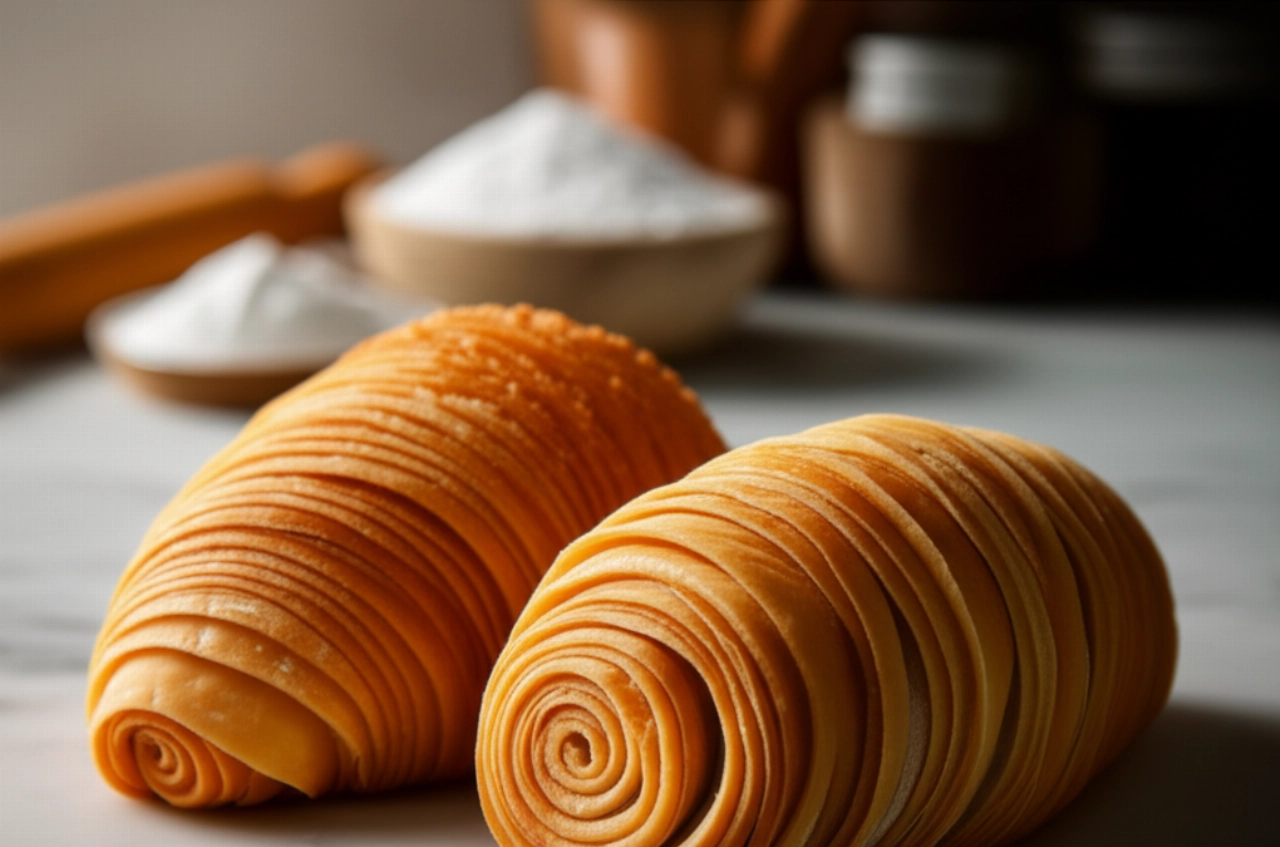
Mistakes Not to Make: The Secrets for a Perfect Sfogliatella
To be forewarned is to be forearmed! Here are the most common pitfalls and how to avoid them, to guarantee you a result worthy of applause.
- Watery Ricotta: If the ricotta has not been perfectly drained, the filling will be too liquid, difficult to manage, and will make the sfogliatella moist and unpleasant. Solution: Drain it for hours, even overnight, in the fridge with a weight on top.
- Lumpy Semolina: Semolina cooked poorly or not stirred properly will create lumps in the filling. Solution: Cook it over low heat, stirring continuously with a whisk until it becomes a smooth, thick cream.
- Riccia Dough Not Elastic Enough or Overworked: If the flour is not strong or if the dough is overworked, it will not develop the necessary gluten for lamination, or conversely, it will become too tough. Solution: Use strong flour and knead only long enough to obtain a smooth and elastic dough. Let it rest for a long time.
- Lard Not Cold or Insufficient: The lard must be cold and in adequate quantity to create the layers. If it's too soft, it will mix with the dough instead of separating it. Solution: Keep the lard in the fridge until the last moment and use the indicated quantity.
- Imprecise Riccia Lamination: This is the most delicate step. If you don't roll the dough very thinly and don't roll it tightly, the layers will not form. Solution: Patience, a long rolling pin, and, if possible, a pasta sheeter (even manual) can help you enormously.
- Overworked Shortcrust Pastry: Overworking shortcrust pastry makes it elastic and hard after baking. Solution: Knead quickly, just long enough to combine the ingredients. The heat from your hands is the enemy of shortcrust pastry!
- Incorrect Baking: An oven that is too hot burns the outside and leaves the inside raw, one that is too cold does not allow for proper browning and crispness. Solution: Preheat the oven well and respect the indicated temperatures and times.
Grandma's Secret: The Magic Touch That Makes Everything Possible
My grandmother, a true Neapolitan, always told me: "My grandchild, sfogliatella is not just flour and ricotta, it's a gesture of love, it's patience. And the biggest secret? The ricotta. It's not enough for it to be sheep's milk, it must be 'happy', rested, and without a drop of whey. And then, time. Don't rush. Every step has its own breath."
Another one of her tricks, which few know, for the filling: after preparing it, she would let it rest in the fridge for at least an hour before using it. This allowed the flavors to blend perfectly and the semolina to absorb any residual moisture, making the filling even more compact and flavorful. Try it, and you'll feel the difference!
Let's Prepare Together: The Step-by-Step Recipe for the Filling (Common Base)
This filling is the beating heart of both sfogliatelle. Follow me carefully, it's simpler than you think!
- Prepare the semolina: In a small saucepan, bring water to a boil with a pinch of salt. Pour in the semolina gradually, stirring continuously with a whisk to prevent lumps. Cook over low heat for 5-7 minutes, until you get a thick and smooth cream. Remove from heat and let it cool completely (this is crucial!).
- Prepare the ricotta: In a large bowl, sift the well-drained ricotta through a fine-mesh sieve or pass it through a strainer. It should become a smooth, lump-free cream.
- Combine the ingredients: Add the granulated sugar to the sifted ricotta and mix well with a spatula or wooden spoon. Incorporate the whole eggs and egg yolks, one at a time, mixing after each addition.
- Add the flavorings and semolina: Add the now-cooled semolina, candied fruit (orange and citron), ground cinnamon, and orange blossom water. Mix gently until you obtain a homogeneous and creamy mixture.
- Rest: Cover the bowl with plastic wrap and let the filling rest in the refrigerator for at least 1 hour. This will allow the flavors to blend and the filling to firm up slightly.
The Riccia Sfogliatella: The Art of Lamination Made Easy
This is the queen of sfogliatelle, the most spectacular and, yes, the most challenging. But with patience and my tips, you'll make it perfectly!
Preparing the Riccia Dough
- Knead: On a pastry board or in a stand mixer, combine the flour, water, and salt. Knead vigorously for at least 15-20 minutes (or 10-12 minutes in a stand mixer with a hook attachment), until you obtain a smooth, elastic, and very tenacious dough. Add the 50g of soft lard and continue kneading until it is completely absorbed and the dough is shiny.
- Rest: Form a ball, wrap it in plastic wrap, and let it rest at room temperature for at least 30 minutes, then in the refrigerator for 2-3 hours (or even overnight). This will relax the gluten and make the dough more workable.
Lamination (The Heart of Riccia)
Here lies the secret! Arm yourself with patience and a good long rolling pin (or a pasta sheeter).
- Prepare the lard: Take the lard out of the fridge 10-15 minutes before using it; it should be pliable but still cold.
- Roll out the dough: Take the dough from the fridge. Lightly flour your work surface and begin rolling it out with a rolling pin. You need to obtain a very thin, almost transparent rectangular sheet, at least 1.5 meters long and about 30-40 cm wide. This is the most critical step: the sheet must be uniform and very thin, without tears. If you have a pasta sheeter, use it to achieve a thickness of about 1 mm.
- Spread the lard: Spread the lard evenly over the entire surface of the very thin sheet. Do not overdo the thickness; it should be a thin but covering layer.
- Roll up: Begin rolling the sheet tightly onto itself, starting from the longest side. You need to obtain a very tight and compact roll, without leaving any air bubbles inside. The tighter the roll, the more layers you will have.
- Rest the roll: Wrap the roll in plastic wrap and place it in the refrigerator for at least 2-3 hours (or better yet, overnight). This will firm up the lard and make the roll easy to cut.
Shaping and Baking the Riccia Sfogliatelle
- Cut the roll: Take the roll from the fridge. With a sharp knife, cut slices about 1.5-2 cm thick. Each slice will be the base for a sfogliatella.
- Shape the shell: Take a slice and, with your thumbs, gently push the center outwards, forming a kind of shell. The layers will fan out. Be gentle so as not to break them.
- Fill: Fill the shell with a generous spoonful of filling, without overfilling to prevent it from spilling out during baking.
- Close: Gently close the sfogliatella, sealing the edges and giving it the classic half-moon or shell shape.
- Bake: Preheat the static oven to 200°C. Arrange the sfogliatelle on a baking sheet lined with parchment paper, spacing them well apart.
- Cook: Bake for about 20-25 minutes, or until they are well golden and the layers have opened and are crispy. The time may vary depending on your oven.
- Cool and serve: Remove from the oven and let cool on a wire rack. Dust with powdered sugar before serving.
The Frolla Sfogliatella: Softness and Flavor in Every Bite
If riccia intimidates you, frolla is your ally! Simpler, but no less delicious.
Preparing the Frolla Dough
- Sand the butter: In a large bowl, combine the flour, powdered sugar, and salt. Add the cold butter cut into cubes and "sand" it with your fingertips, rubbing the butter with the flour until you obtain a granular mixture, similar to coarse sand.
- Add the flavorings and eggs: Add the grated lemon zest. Incorporate the whole eggs, one at a time, and knead quickly until a homogeneous dough forms. Do not overwork the dough!
- Rest: Wrap the dough ball in plastic wrap and let it rest in the refrigerator for at least 30 minutes (preferably 1 hour).
Shaping and Baking the Frolla Sfogliatelle
- Roll out the frolla: Take the frolla from the fridge. Lightly flour your work surface and roll it out with a rolling pin to a thickness of about 3-4 mm.
- Cut out discs: Using a round cutter or a glass (8-10 cm diameter), cut out dough discs. You will need two discs for each sfogliatella.
- Fill: Take one disc, place a generous spoonful of filling in the center. Cover with another disc.
- Seal and shape: Seal the edges of the two discs, pressing with your fingers or with the tines of a fork, giving it the classic half-moon shape. You can also use a half-moon pastry cutter for a more precise edge.
- Bake: Preheat the static oven to 180°C. Arrange the sfogliatelle on a baking sheet lined with parchment paper.
- Cook: Bake for about 20-25 minutes, or until they are well golden.
- Cool and serve: Remove from the oven and let cool on a wire rack. Dust with powdered sugar before serving.
Tips and Frequently Asked Questions about Riccia and Frolla Sfogliatella
Here are some of the questions I get asked most often. I hope they are helpful!
- Can I prepare the riccia dough in advance? Absolutely yes! The riccia dough roll can be prepared even 2-3 days in advance and stored well wrapped in plastic wrap in the refrigerator. This allows you to break up the work into multiple stages.
- How do I know if the riccia lamination was successful? You will see the layers separate and become crispy and golden during baking. If they don't open, the dough was probably not thin enough or the lard was not well spread or too soft. Don't get discouraged, practice makes perfect!
- What is the best ricotta to use? Without a doubt, fresh sheep's milk ricotta. It has a more intense flavor and a more suitable consistency. It is essential that it is well-drained to avoid a watery filling.
- Can I freeze sfogliatelle? Yes, both raw and cooked.
- Raw: After shaping them, freeze them on a tray and, once hardened, transfer them to freezer bags. Bake them directly from frozen, adding a few minutes to the baking time.
- Cooked: Let them cool completely, then freeze them. Thaw them at room temperature and warm them slightly in the oven before serving to restore crispiness.
- Why are my frolla sfogliatelle hard? Most likely, you overworked the dough. Shortcrust pastry should be kneaded as little as possible to avoid developing too much gluten, which would make it elastic and hard.
A Masterpiece of Flavor, a Gesture of Love
There you have it! Now you no longer just have a recipe, but all the secrets to bring a masterpiece of Neapolitan pastry to your table. Whether you choose the challenge of riccia or the sweetness of frolla, every bite will be a journey into the heart of tradition, a taste that speaks of home, passion, and love for good food.
Don't be afraid to experiment. Cooking is a gesture of creativity and sharing. But start from this solid base and you'll see that applause will not be lacking. Your kitchen will become the go-to place for perfect Sfogliatelle!
Have you tried our recipe? We are very curious to see your masterpiece! Leave a comment below, tell us how it went, or share a photo on Instagram by tagging @CercaRicette.it. If you loved these sfogliatelle, you can't miss our recipe for Neapolitan Pastiera or for another delight like Neapolitan Struffoli. Continue to explore the magic of Italian cuisine with us!
